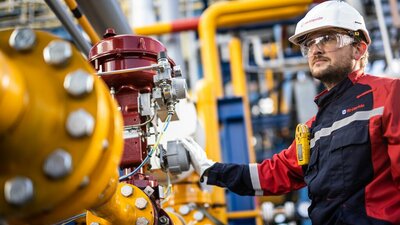From expeditions to innovations, Energy Observer’s technologies
Published on September 06, 2024
3 minutes

After a seven-year world tour and more than a hundred stopovers on every continent, Energy Observer returned to her home port of Saint-Malo in Brittany, France, for the summer of 2024. Find out more about the secrets behind the technologies that made this incredible odyssey possible for the first laboratory vessel to be powered by renewable energy.
The aim of the Energy Observer project, launched by Captain Victorien Erussard, was to be entirely self-sufficient in terms of energy, without emitting any greenhouse gases or fine particles. To achieve this aim, it was vital to produce hydrogen, whatever the weather and whatever time of day or night, as an addition to the energy mix, enabling the storage of the energy produced by the sun. Watch this video to enjoy a guided tour of the Energy Observer boat by Luc Bourserie, the boat’s systems engineer.
A partnership to bring together wide-ranging expertise
Energy Observer’s partnership with Air Liquide, which is committed to developing hydrogen mobility, was a natural choice. Initially signed in 2017, the partnership was further strengthened in 2021 when Air Liquide became Energy Observer’s main partner. The objective was to bring together wide-ranging expertise to accelerate the energy transition and raise public awareness of the potential and the challenges of hydrogen. With their expert knowledge of the entire hydrogen value chain, from production to storage, Air Liquide’s technicians and engineers provided practical skills transfer, participating in research and development projects led by Energy Observer. The company’s teams also worked on Energy Observer 2, a hydrogen-powered cargo ship which has been designed to transport goods with minimal carbon impact.
An on-board hydrogen production facility
Luc Bourserie, the experimental catamaran’s systems engineer, says: “202 m2 of photovoltaic panels were installed to provide power for life on board, the boat’s motors and its various systems.” To store surplus electricity and compensate for the intermittent nature of renewable energy, a hydrogen production facility was established. Luc Bourserie explains: “the hydrogen produced from seawater electrolysis was compressed and stored before being converted into electricity using a fuel cell. It was stored in the eight compressors on board the boat, with a total capacity of 62 kg of hydrogen at 350 bar.” He adds, “when we couldn’t balance our day and night energy needs solely with the day’s solar energy, we used hydrogen to convert it back into electricity.” Over the 7 years of the odyssey, Energy Observer produced a total of more than 1.3 tonnes of hydrogen on board, using seawater. Energy Observer provided opportunities to test hydrogen, electrolyzers, fuel cells and energy storage in wide-ranging and often extreme meteorological conditions, from the coldest temperatures at the Earth’s Poles to very high temperatures and high humidity around the Equator. It has proved that hydrogen is a credible solution for the energy transition and the decarbonization of the maritime industry.




